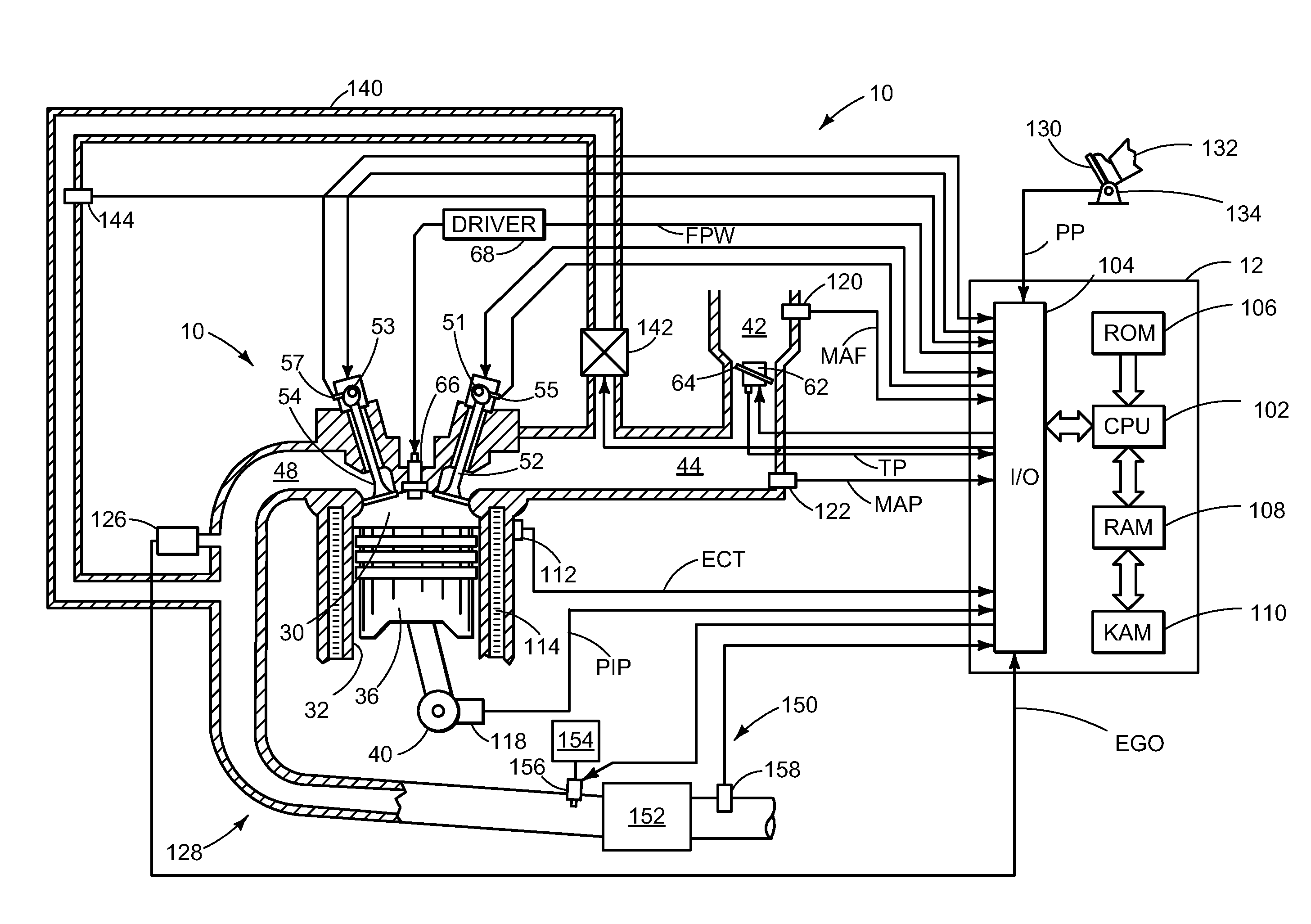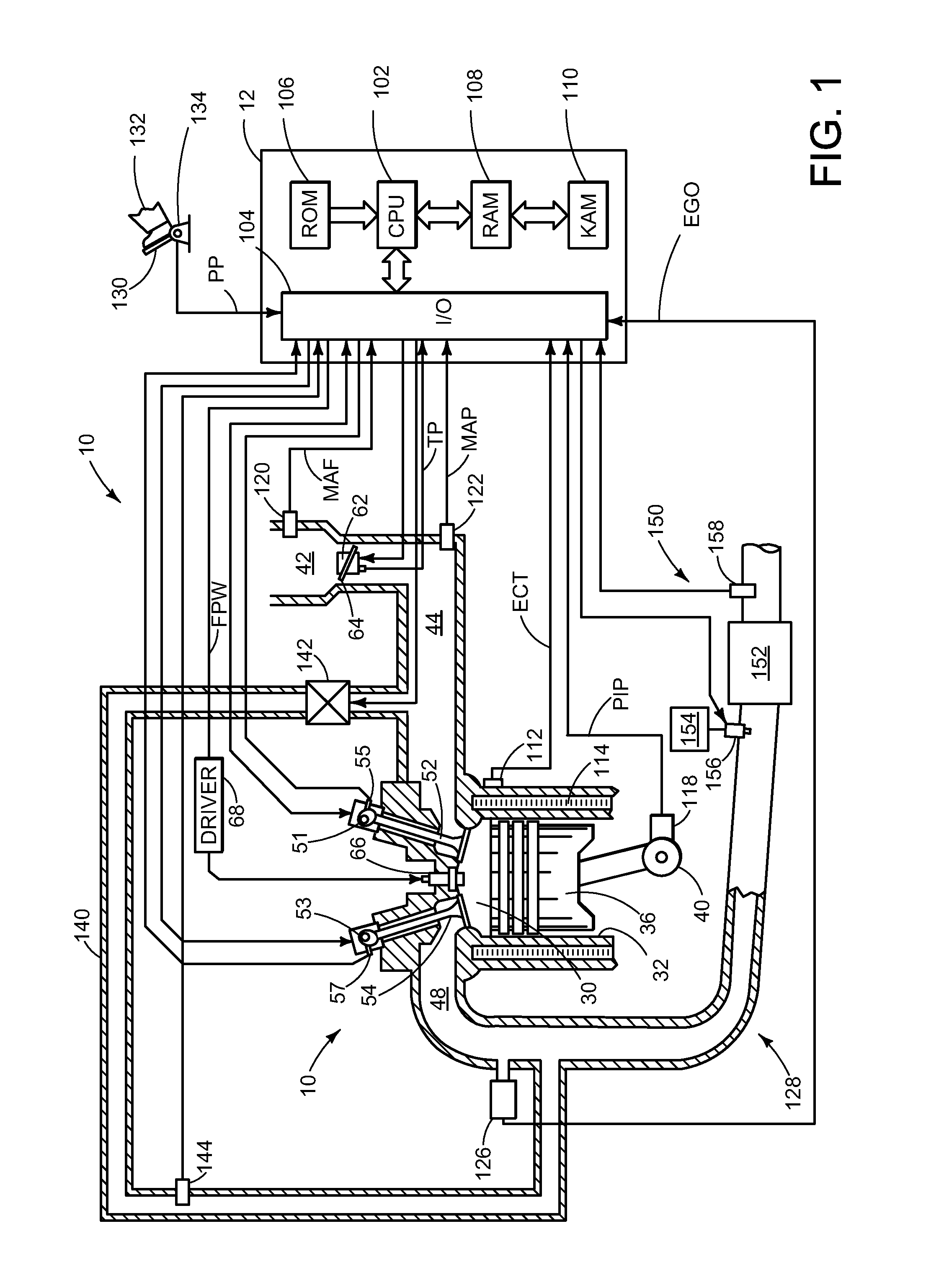Enhanced real-time ammonia slip detection
a real-time ammonia slip detection and enhancement technology, applied in the field of ammonia slip detection, can solve the problems of reduced sensitivity of the segment length method, difficulty in real-time nhsub>3 /sub>slip detection system implementation, and inaccuracy of nosub>x /sub>output, etc., to achieve enhanced allocation of nox sensor output, high detection sensitivity, and high level of nh3 detection
- Summary
- Abstract
- Description
- Claims
- Application Information
AI Technical Summary
Benefits of technology
Problems solved by technology
Method used
Image
Examples
Embodiment Construction
[0019]The following description relates to methods and systems for detecting NH3 slip from an SCR system based on transient NOx signals detected therein. In one example, a method is described that comprises using information from two NOx sensors, a feedgas sensor located upstream of the SCR and a tailpipe sensor located downstream, to predict a tailpipe NOx slope responsive to the transient feedgas NOx signal. In one particular example, a segment length method is disclosed that further comprises comparing a predicted (or expected) downstream NOx rate of change to the measured downstream NOx rate of change via a segment length method and allocating output from the NOx sensor to each of ammonia and nitrogen oxide in different amount depending on the transient signals detected. For simplicity and clarity, the allocation allocates more of the NOx sensor output to NOx than NH3 when a ratio of the measured downstream NOx rate of change relative to an expected downstream NOx rate of change...
PUM
| Property | Measurement | Unit |
|---|---|---|
| length | aaaaa | aaaaa |
| size | aaaaa | aaaaa |
| time constant | aaaaa | aaaaa |
Abstract
Description
Claims
Application Information
 Login to View More
Login to View More - R&D
- Intellectual Property
- Life Sciences
- Materials
- Tech Scout
- Unparalleled Data Quality
- Higher Quality Content
- 60% Fewer Hallucinations
Browse by: Latest US Patents, China's latest patents, Technical Efficacy Thesaurus, Application Domain, Technology Topic, Popular Technical Reports.
© 2025 PatSnap. All rights reserved.Legal|Privacy policy|Modern Slavery Act Transparency Statement|Sitemap|About US| Contact US: help@patsnap.com



